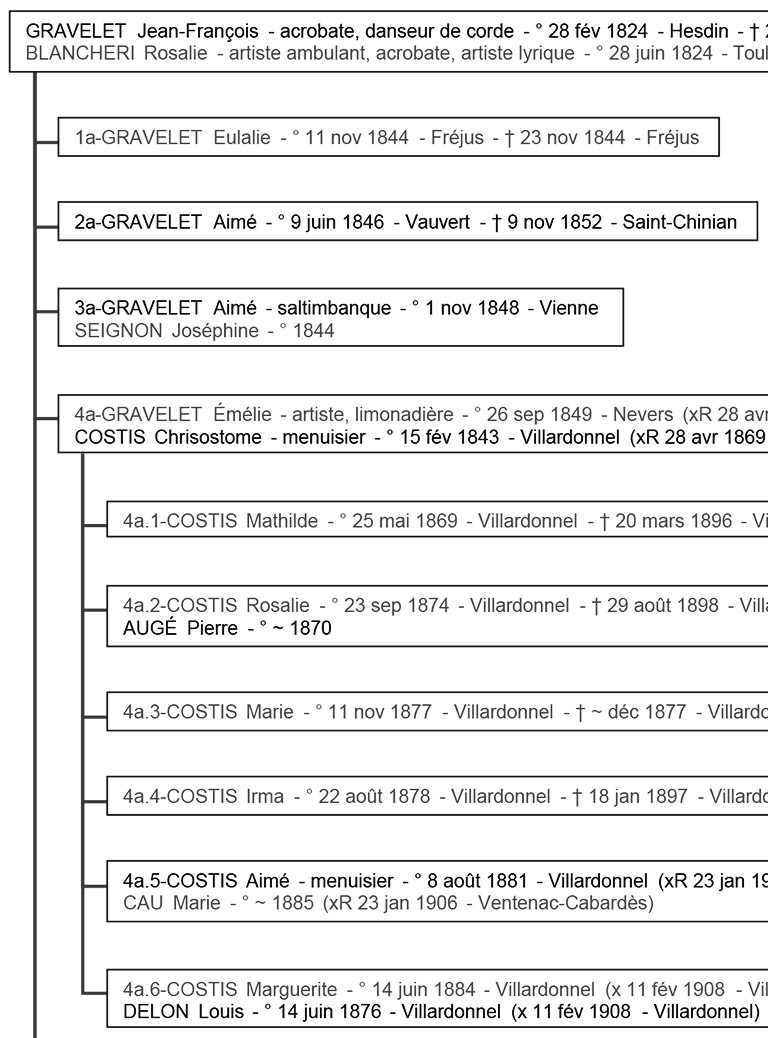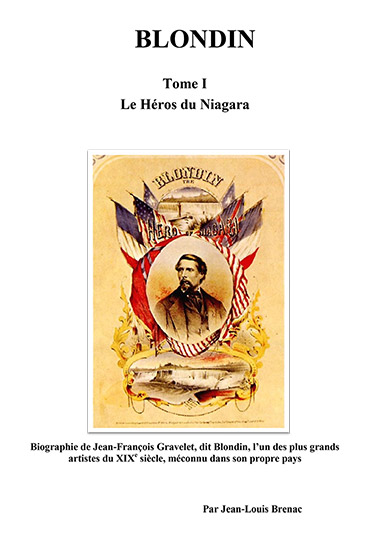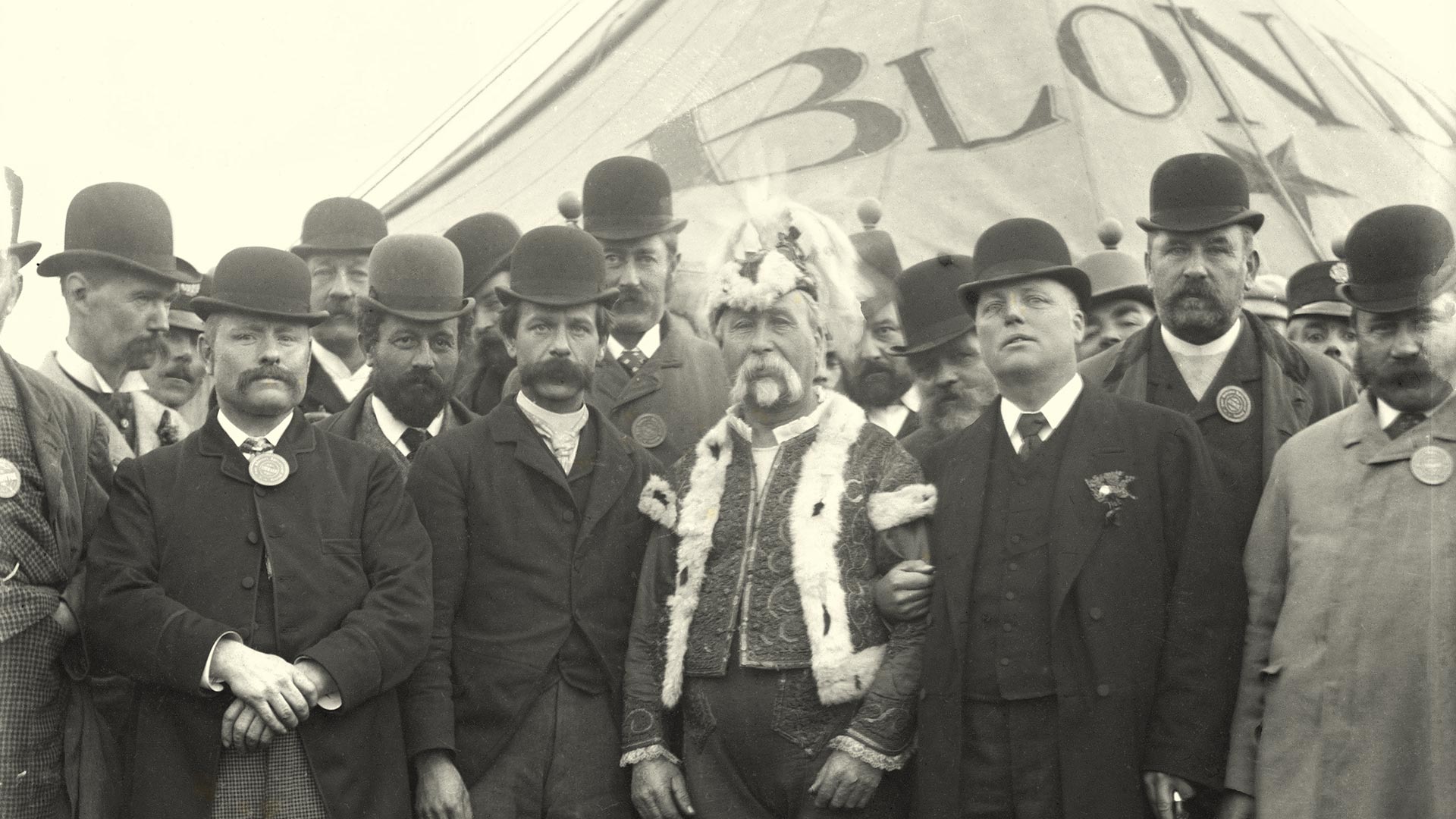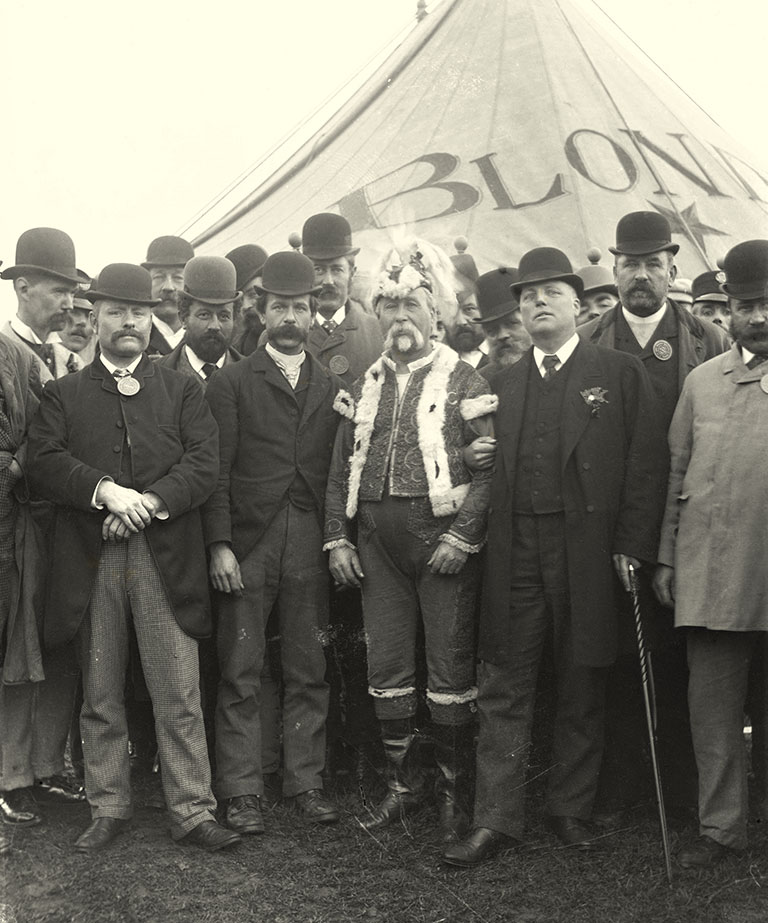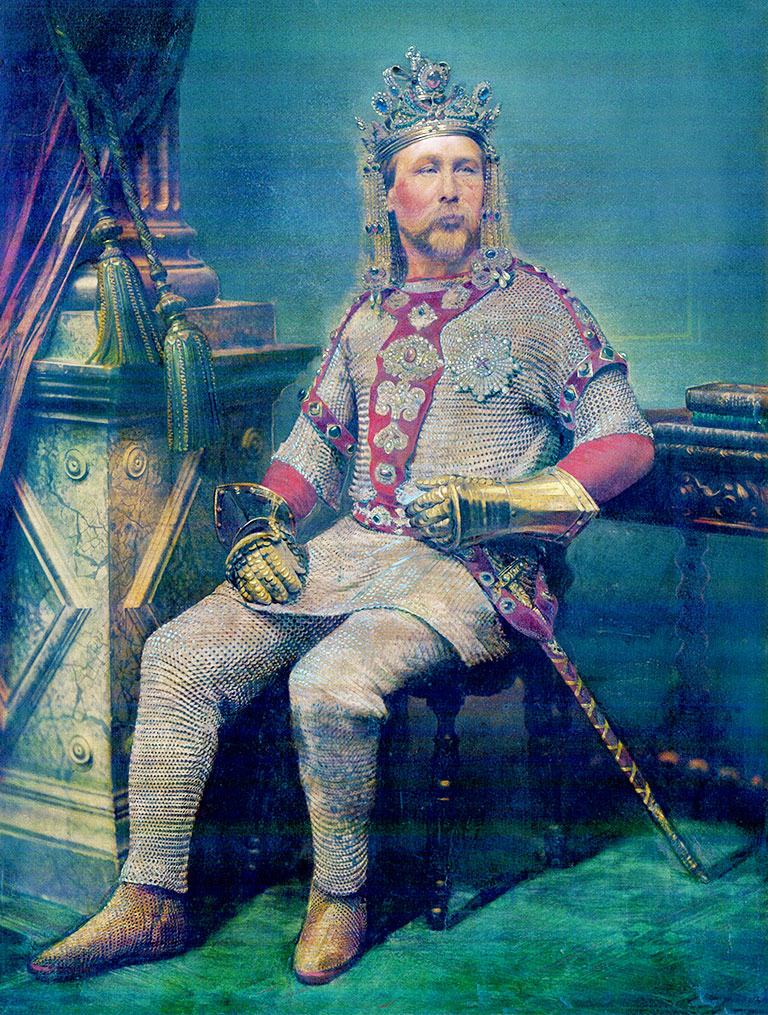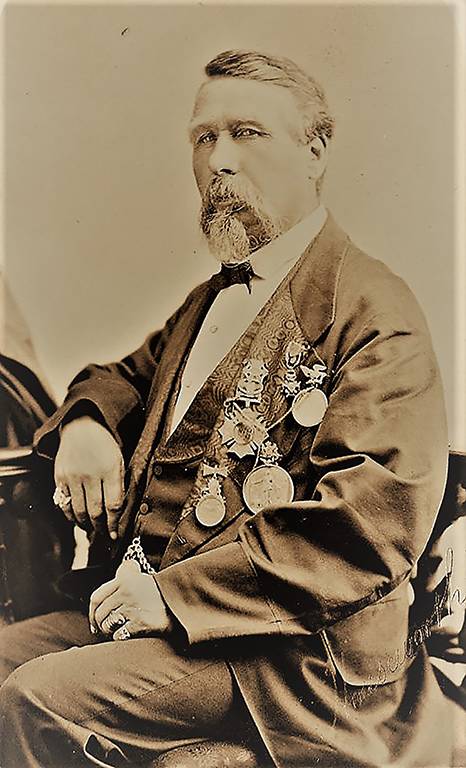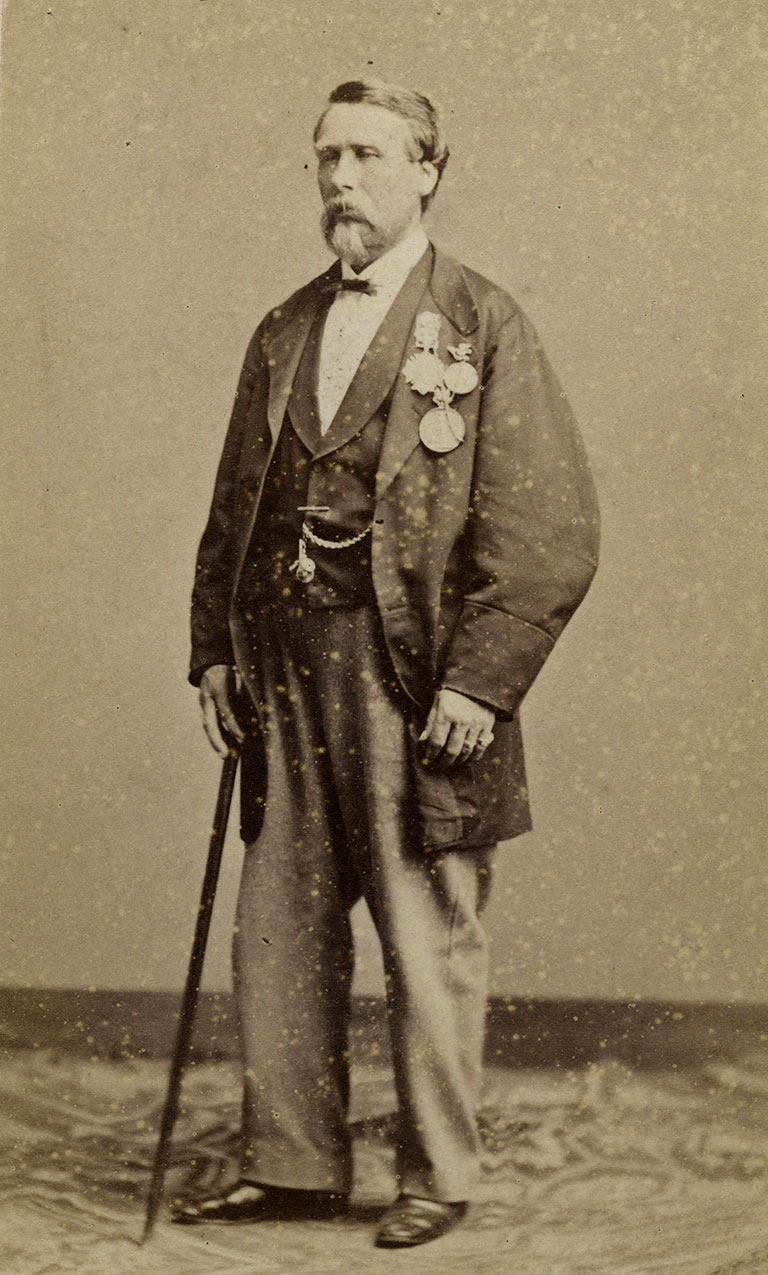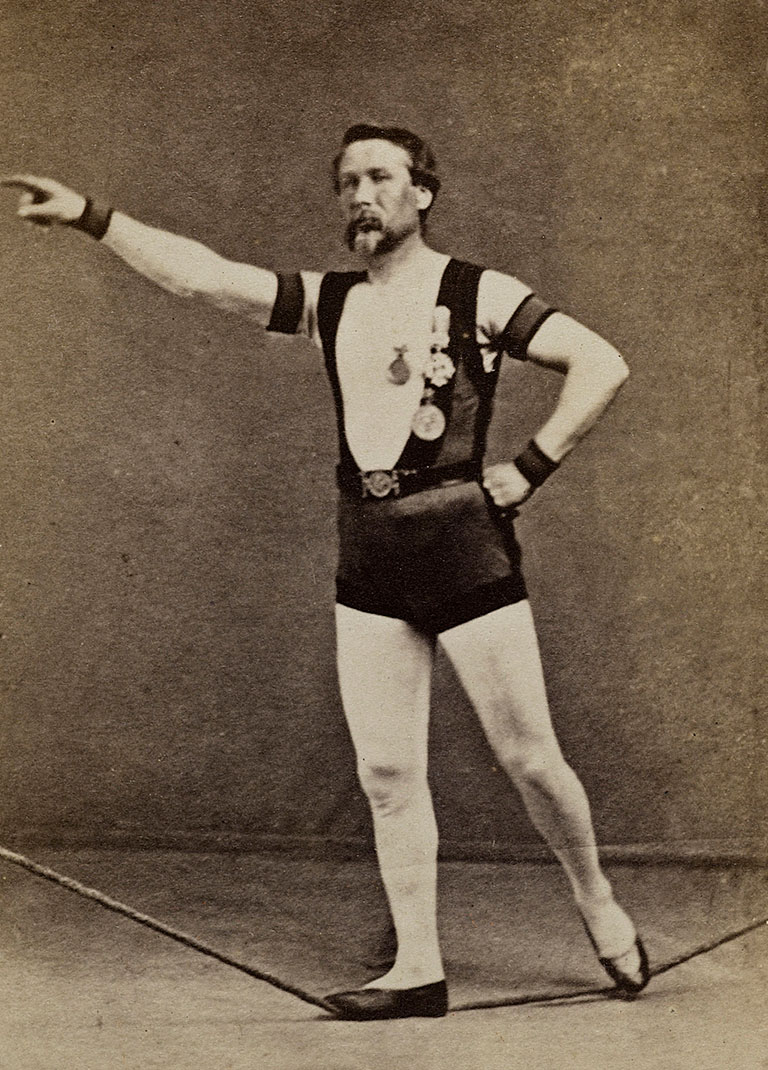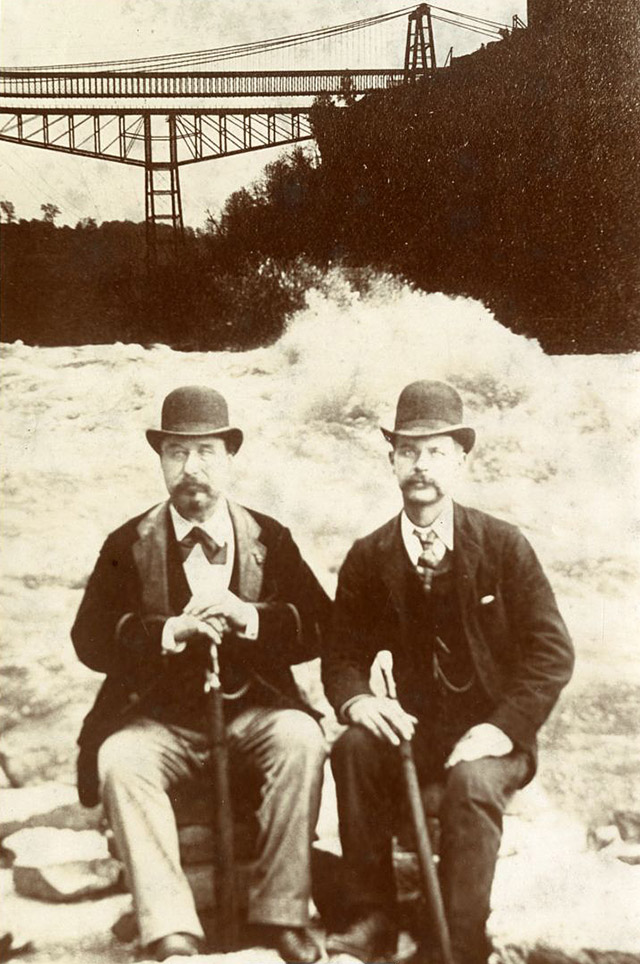Origins of the Gravelet Family
The Gravelet family originated from Champignolles, a small village in Normandy.
Pierre Gravelet, Blondin’s grandfather (born 1790), and grandmother, Henriette Regnault established a troupe of acrobats and rope-dancers with their two sons, Étienne and André.
After grandfather Pierre’s death in 1803, André continued performing until his conscription into the army at age 20, where he possibly took part in the Russian campaign and the Battle of Waterloo.
Marriage and Formation of the Family Troupe
After leaving the army, André resumed his acrobatic career and married fellow performer Eulalie Merlet. Together, they formed a troupe of rope-dancers that toured France and neighbouring countries.
André and Eulalie had four children:
- Julie Pauline (born 1820)
-
Jean-François (born 28 February 1824, in Hesdin, northern France)
- Louis-André (born 1829)
- Louis (born 1831)
The children joined the troupe as soon as they could walk the rope, with Pauline and Jean François proving exceptionally talented.
Leadership After André’s Death
When André died in 1837, Eulalie led the troupe with support from her children. Pauline, the eldest, married Jean-François in 1846 and left the troupe, replaced by Marie Rosalie Blancheri. The troupe expanded to fifteen members, with Jean-François and Louis-André as principal performers.
The Gravelet Brothers’ Performances
Jean-François amazed audiences with feats such as balancing a four-legged chair on a high rope while sitting on it, performing somersaults over the chair, and leaping over burning candles on a low rope without a balancing pole. He also showcased musical talents, playing the violin and drums while performing acrobatic stunts. He claimed to be the first acrobat in Europe, a claim well deserved.
Blondin in America
In 1851, at age 27, Jean François Gravelet was invited by Gabriel Ravel to join the renowned French troupe, the Ravels, touring America. Taking the stage name “Blondin,” he left behind his wife, Marie Rosalie, and their three children:
- Aimé Léopold (born 3 June 1846; died 9 November 1852)
- Aimé Jean-Baptiste (born 1 November 1848)
- Émélie (born 26 September 1849)
A Scandalous New Beginning
While performing at Niblo’s Garden Theatre in New York, Blondin fell in love with 15-year-old singer Charlotte Lawrence. They married in Boston on 21 August 1852, despite Blondin already being married in France, committing bigamy. The wedding was officiated by Reverend Edward T. Taylor, believed to have inspired the character of Father Mapple in Herman Melville’s Moby-Dick.
Touring the Americas
For eight years, Blondin toured North America and the Caribbean with the Ravels and the Martinetti Family, performing across the United States, Canada, and Cuba. In October 1855, the troupe journeyed through Nicaragua and then California, where they performed for five months.
Fame at Niagara
In 1859, Blondin left the troupes to pursue a solo career, achieving immense fame with multiple daring crossings over the Niagara River. His feats included:
- Carrying his agent, Harry Colcord, on his back on three occasions
- Crossing on stilts
- Performing before Prince Edward, heir to the British throne
These performances made Blondin celebrated in the United States and British Empire. By contrast, he remained largely unrecognised in France, where the Parisian press dismissed him. His mother’s death in 1854 was a personal loss during these years abroad.
To England and Family Life
At the outbreak of the American Civil War in May 1861, Blondin left America for England with Charlotte and their three children: Adèle (born 1854), Edward (1855), and Iris (1859). His new agent, Henry Coleman, negotiated an unprecedented fee of £100 per performance at Crystal Palace, four times higher than previous records.
Triumph at Crystal Palace and Nationwide Success
Over two years, Blondin performed at Crystal Palace to approximately 1,480,000 spectators and toured fifty major British cities, attracting an additional 1.5 million attendees. In October 1863, he was honoured by a visit from Prince of Wales, King of Greece, and Prince Christian of Denmark, witnessing part of his low-rope act.
Home Life and Continuing Career
Blondin and Charlotte made their home at 32 Finchley Road, St John’s Wood, naming it Niagara Villa. They had two more children: Henry Coleman (1862) and Charlotte (1866). Over the next three decades, Blondin split his performance seasons between London, the UK, and tours across Europe and worldwide.
A Royal Tour of the Iberian Peninsula
In 1863, Blondin toured Spain and Portugal, performing before Queen Isabel II and the Spanish Royal Family, one of the highlights of his European career.
Changes in Representation
After agent Henry Coleman retired to become a wine merchant, Messrs Corbyn and Parravicini became Blondin’s exclusive agents, arranging tours through Italy, Austria, Germany, and Russia. In September 1864, Blondin performed in Saint Petersburg, though persistent rain limited performances.
Financial Ruin and Return to Russia
In early 1865, Coleman’s bankruptcy caused Blondin to lose his entire fortune of £13,600. Later that year, Blondin returned to Saint Petersburg, rebuilding some income with performances at the Concert Hall of the Waters Minerales.
Disappointment in France
Blondin’s long-awaited French debut in July 1866 at Plateau de Gravelle was disappointing, with low attendance partly due to confusion caused by a Blondin impersonator performing in Paris. The impersonator’s continued interference led Blondin to sue for damages in 1867. Despite winning, parts of the Parisian press remained hostile. After discovering his rope had been sabotaged, Blondin cancelled his engagement and returned to London.
A New National Identity
On 4 June 1868, Jean François Gravelet was naturalised as a British citizen, marking a new chapter personally and professionally.
Honours in Spain
In 1870, after tours in Belgium, Holland, and Germany, Blondin returned to Spain where he was made Chevalier of the Order of Queen Isabel la Católica by Regent Francisco Serrano. He thereafter styled himself “Chevalier Blondin, Hero of Niagara”.
A Perilous Journey to India and Australia
In October 1873, Blondin began an eighteen-month tour of India and Australia. Early in the voyage, the steamship Flintshire wrecked off Australia’s northeast coast. All passengers were rescued, but Blondin lost his performance rope.
A Round-the-World Adventure
Returning to England in March 1875, Blondin and Charlotte then embarked on a two-year global tour with their three youngest children. Stops included Australia, New Zealand, California, Peru, Chile, Argentina, Uruguay, and Brazil.
Between Aden and Ceylon aboard the steamer Poonah, Blondin performed an extraordinary feat: walking a rope stretched between the mainmast and mizzenmast, sitting five times due to heavy waves. His son Henry Coleman served as his assistant for the first time on this tour.
Return to France and a Grand Project Gone Wrong
Blondin’s third French appearance in late 1877 at the Palais de l’Industrie was a success, attended by General Ulysses S. Grant. Encouraged, Blondin invested in Galeries Parisiennes, an entertainment complex near Alma Bridge featuring an artificial Niagara Falls crossing. The project collapsed after the entrepreneur was arrested for fraud, leaving Blondin financially ruined again.
A Drastic Change of Fortune
Forced to sell Niagara Villa, Blondin moved to 6 Boscobel Gardens near Marylebone Station. He supported himself by performing frequently across the UK, Europe, and India.
A Marriage Regularised
On 29 October 1881, following the death of his first wife, Blondin formally married Charlotte Lawrence, regularising their marriage after years together.
Disillusionment in America
In 1888, Blondin signed with impresario Imre Kiralfy for New York performances but was restricted to venues with safety nets and barred from Central Park. Proposals for new Niagara crossings were rejected, prompting Blondin’s bitter declaration: “I do not like America. I will not come here again.” He returned to England shortly afterwards.
Personal Loss
On 15 December 1888, Charlotte, Blondin’s devoted wife and partner, passed away.
Settling at Little Ealing
In 1889, Blondin purchased Niagara House in Little Ealing, London. Surrounded by gardens, it became his sanctuary. He lived there with his daughter Adèle, a coachman, servant, and a pack of beloved black-and-tan terriers. His son Henry Coleman lived nearby. Blondin was often visited by journalists from prestigious magazines, keen to interview one of the world’s earliest iconic entertainers.
A Late-Life Marriage
Despite advancing age, Blondin remained active. In 1895, while performing in Blackpool, he suffered a severe back injury. Cared for by 29-year-old nurse Katherine James, Blondin married her on 29 November 1895. Remarkably, the next day he travelled to Glasgow to honour a two-week engagement.
Final Years and Decline
Blondin battled diabetes and deteriorating eyesight, giving his final performance in Leeds in August 1896.
He died on 22 February 1897, at his home ("Niagara House") in Little Ealing, less than one week away from what would have been his 73rd birthday.
A Hero’s Farewell
Blondin was buried on 25 February at Kensal Green Cemetery, London. The ceremony was attended by a large crowd. A coil of rope tied with white ribbons adorned his coffin. Reverend M. C. Richardson described Blondin as “a model of courage and domestic virtues.”
